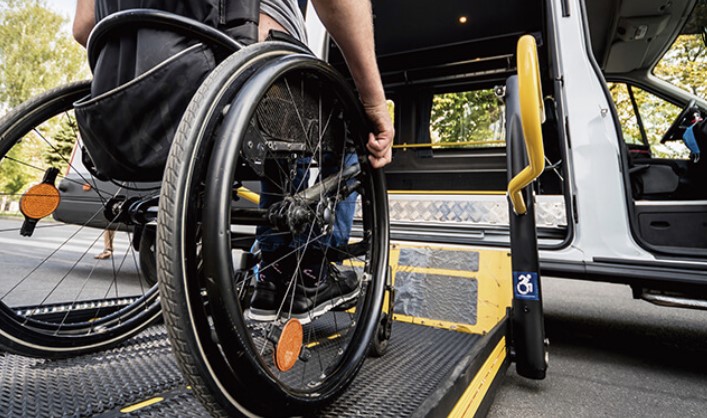Paratransit Wheelchair Tiedown & Occupant Restraint

John R. Yannaccone, P.E., Principal Mechanical Engineer
Case Summary: A paratransit service was transporting the plaintiff to a doctor’s appointment when their vehicle was involved in a minor crash. During the crash, the plaintiff, in their personal wheelchair, was ejected from the wheelchair and sustained multiple fractures to his arms and legs. The plaintiff claimed the driver failed to secure his seatbelt prior to leaving his residence.
Expert Analysis: Photographs of the paratransit van following the crash showed minor frontal damage. The interior vehicle photographs showed the plaintiff’s wheelchair secured to the vehicle using the four wheelchair tiedown straps connected to appropriate anchor locations in the vehicle. The pictures also displayed portions of the occupant restraint belts, and clearly showed they were not connected after the crash.
Prior to the paratransit van’s post-impact inspection, the wheelchair had been removed from the vehicle. Several of the wheelchair tiedown and occupant restraint system (WTORS) components had been disconnected from the van and stowed with other WTORS in the van. This prevented identification of the specific WTORS components in use at the time of the crash. Inspection of all the components failed to reveal any significant evidence of loading on the components, consistent with the minor nature of the crash and the ejection of the occupant. There was no evidence that any of the occupant restraint components failed during the incident.
The driver reported that the plaintiff had stated he did not want to wear his occupant belt because it was uncomfortable. The driver claimed to have told the plaintiff that he was required to wear the seatbelt. In deposition, the driver correctly described the occupant restraint portion of the system and how it should be installed and placed on the plaintiff. The driver further testified he fastened the seatbelt on the plaintiff before departing for the doctor’s office; however, immediately following the crash, he found the plaintiff on the floor of the van and the occupant belt was unfastened.
Records from the paratransit company included several reports from drivers who previously transported this plaintiff and similarly reported the plaintiff would object to wearing the seatbelt and would remove his occupant restraint during trips. The records established a clear history of the plaintiff removing his seatbelt after it was placed on him by the drivers. Had the occupant restraint been used in the manner described by the driver, it would have restrained him in his wheelchair and prevented any serious injuries in the minor crash.
Result: While the paratransit company was still responsible for causing the crash that led to the plaintiff falling out of his wheelchair, they were able to show there was a lack of evidence of any failure of the WTORS and demonstrate the use of the occupant restraint portion would have provided protection to the occupant in a crash of this severity. The documented history of the plaintiff taking his own seatbelt off during transport supported the driver’s statement that he properly secured the plaintiff with the occupant restraint but found it unbuckled after the incident. These factors contributed to the ability to settle the case prior to trial for a reduced amount.
Categories: John R. Yannaccone, P.E. | Mechanical EngineeringTags: Paratransit | Seatbelt | Wheelchair | WTORS


